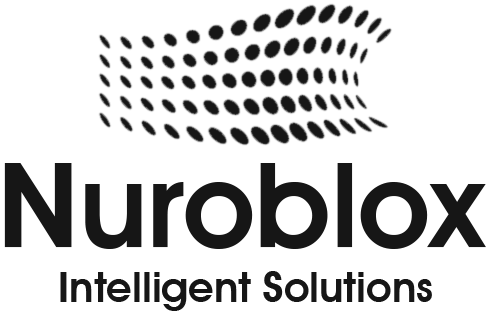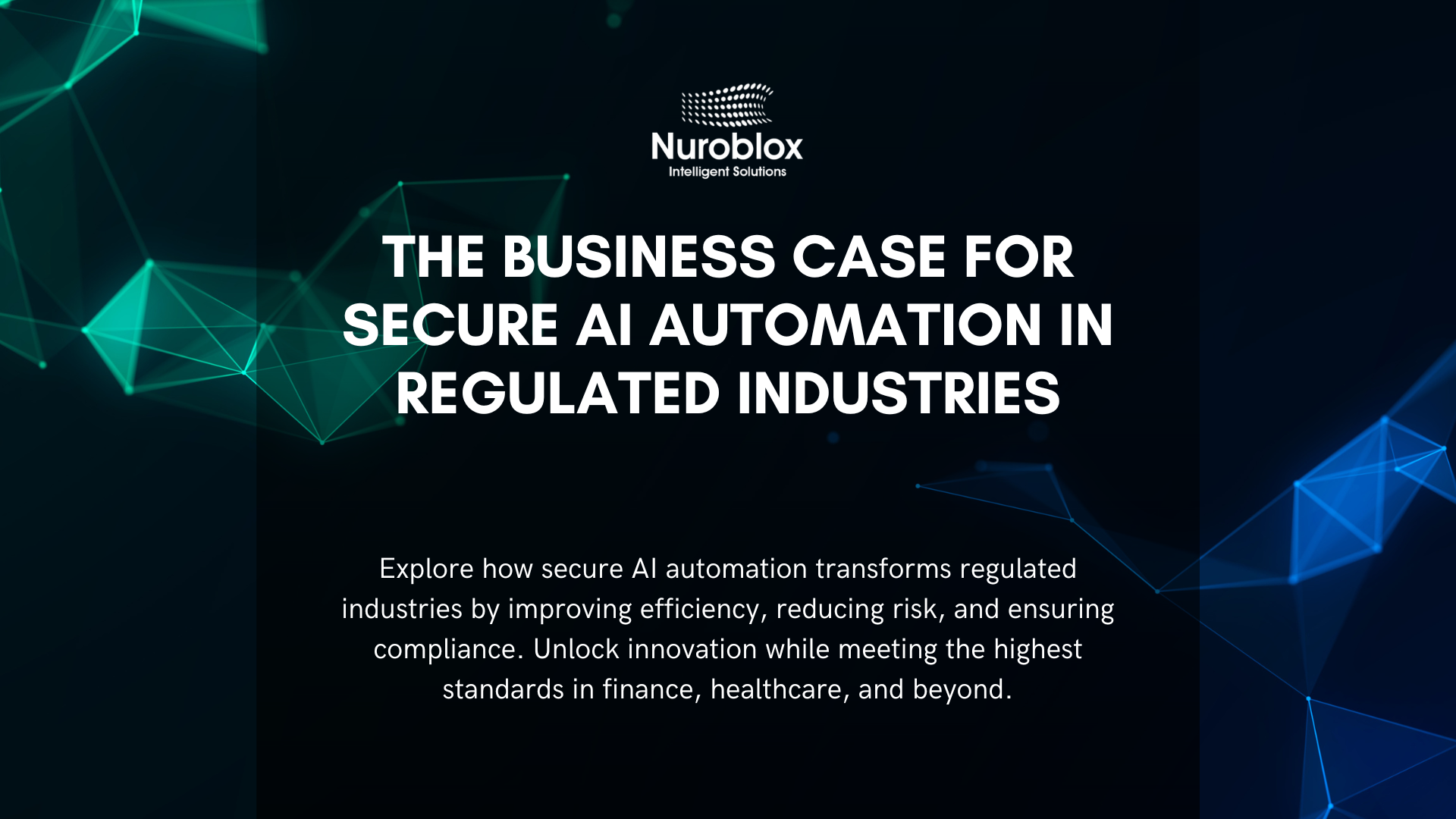The Business Case for Secure AI Automation in Regulated Industries
In the high-stakes world of regulated industries, compliance isn’t just a box to tick, it’s the bedrock of operational integrity and public trust. For sectors like finance, healthcare, and pharmaceuticals, the cost of maintaining this compliance is staggering. Financial institutions alone spend an estimated $61 billion annually on compliance operations. Yet, despite this massive investment, traditional, manual approaches are buckling under the weight of ever-expanding data volumes and increasingly complex regulatory landscapes. A staggering 95% of transaction monitoring alerts, for instance, are false positives, burying compliance teams in a deluge of non-threatening events.
This operational friction creates a critical business challenge: How can organizations enhance accuracy and security while controlling runaway costs? The answer lies in secure AI automation. This is not about replacing human expertise but augmenting it with intelligent systems that can process information at a scale and speed that is simply beyond human capacity. By shifting the paradigm from reactive, manual reviews to proactive, automated oversight, AI presents a powerful business case for turning a significant cost center into a source of strategic advantage.
The Unseen Costs of Traditional Compliance
Before an organization can appreciate the ROI of AI automation, it must first confront the deep-seated inefficiencies of its current compliance frameworks. The reliance on manual processes is not just slow; it’s a significant drain on financial resources and a direct threat to regulatory standing.
Financial Drain and Operational Inefficiency
The most visible cost of traditional compliance is financial. The billions spent annually are largely allocated to labor-intensive tasks: manual data entry, document verification, transaction monitoring, and regulatory reporting. These processes are not only expensive but also notoriously slow, creating bottlenecks that can delay product launches, slow down customer onboarding, and impede overall business agility. In a competitive market, such delays translate directly to lost revenue and diminished market share.
The High Price of Human Error
Manual processes are inherently susceptible to human error. A misplaced decimal point in a financial report, an overlooked clause in a clinical trial document, or a miskeyed data point in a patient record can have catastrophic consequences. These mistakes can lead to severe regulatory penalties, mandatory product recalls, legal liabilities, and irreparable damage to a company’s reputation. The risk is compounded by the sheer volume of data, which makes meticulous, error-free manual review a near-impossibility.
The Compliance Treadmill: Keeping Pace with Regulatory Change
Regulated industries operate in a state of constant flux. Regulatory bodies frequently update rules and guidelines, requiring companies to adapt their processes swiftly to remain compliant. Manually tracking, interpreting, and implementing these changes across an organization is a monumental task. This reactive “compliance treadmill” consumes valuable resources and perpetually keeps businesses on the defensive, unable to focus on proactive strategy or innovation.
AI Automation – From a Cost Center to a Strategic Asset
Secure AI automation directly addresses the core weaknesses of manual compliance. By leveraging machine learning, natural language processing (NLP), and predictive analytics, these systems transform compliance from a reactive burden into a proactive, efficient, and intelligent business function.
Achieving Surgical Precision in Compliance Monitoring
One of the most significant advantages of AI is its ability to dramatically improve the accuracy of compliance monitoring. While traditional systems generate false positive alerts 95% of the time, AI-powered systems learn from historical data to distinguish between genuine threats and benign anomalies with far greater precision. This allows compliance teams to focus their attention on the small fraction of alerts that pose a real risk. Furthermore, AI enables a shift from periodic, batch-based reviews to real-time, continuous monitoring, allowing for the instant detection and mitigation of suspicious activities.
Supercharging Efficiency: How AI Delivers a 70% Speed Boost
By automating repetitive, time-consuming tasks, AI frees up highly skilled compliance professionals to focus on strategic analysis and complex decision-making. The impact on efficiency is profound. Studies show that AI can help compliance teams handle cases up to 70% faster. This acceleration extends to regulatory reporting, where AI can automate the compilation of documents like Suspicious Activity Reports (SARs), reducing documentation time by as much as 70% and ensuring consistency with regulatory standards.
Data-Driven Decision-Making and Predictive Compliance
AI systems excel at identifying patterns and trends within vast datasets that are invisible to human analysts. This capability provides businesses with actionable, data-driven insights to refine their compliance strategies. More importantly, AI enables a move toward predictive compliance. By analyzing historical data on regulatory changes and enforcement actions, AI models can forecast potential risks, allowing organizations to adapt their processes proactively before new regulations come into effect or before risks escalate into crises.
Real-World Applications – AI Automation in Regulated Industries in Action
The business case for AI is not theoretical. Across regulated sectors, companies are already deploying AI-powered solutions to solve critical compliance and security challenges.
In Financial Services – Securing Transactions and Automating Reporting
The financial sector has been a pioneer in AI adoption. Banks and fintech firms use AI for –
- Fraud and Anti-Money Laundering (AML) – AI algorithms monitor millions of transactions in real-time to detect and flag suspicious behavior, significantly improving fraud prevention.
- Automated Reporting – AI platforms automate the generation of SARs and other regulatory reports, ensuring accuracy and timeliness while freeing up analysts.
- Know Your Customer (KYC) – AI streamlines the customer onboarding process by automating identity verification and due diligence checks, enhancing compliance with AML regulations.
In Healthcare and Pharmaceuticals – Ensuring Patient Safety and Accelerating Innovation
In healthcare and life sciences, AI is being used to enhance compliance and speed up life-saving innovations-
- Pharmacovigilance – AI systems automate the monitoring and reporting of adverse drug reactions, helping pharmaceutical companies meet their safety reporting obligations more efficiently.
- Clinical Trials – AI tools analyze clinical trial data to identify trends and potential inconsistencies, ensuring data integrity and accelerating the submission process.
- Regulatory Affairs – Platforms like DDi’s REGai use AI to automate the entire regulatory submission lifecycle, from document creation to submission tracking, helping to reduce errors and shorten time-to-market.
Beyond Finance and Health – AI in Energy and Manufacturing
The benefits of AI automation extend to other regulated areas as well. In the energy sector, AI helps manage carbon emissions and ensure compliance with environmental regulations. No-code AI automation platforms are replacing outdated, code-heavy workflows, improving accountability and auditability. In manufacturing, AI-powered visual analytics systems perform automated quality control checks, ensuring products meet stringent safety and quality standards.

Despite its immense potential, the deployment of AI in regulated industries is not without risk. Acknowledging and mitigating these challenges is fundamental to building a successful and secure AI strategy.
The “Black Box” Problem – Explainability and Auditability
Many advanced AI models operate as “black boxes,” making it difficult to understand the logic behind their decisions. This lack of transparency, known as information asymmetry, poses a major challenge in regulated industries, where companies must be able to explain and justify their actions to auditors and regulators. Without clear audit trails, accountability is compromised, and proving compliance becomes difficult.
New Frontiers of Risk – Data Privacy, Bias, and Security
AI systems are trained on vast amounts of data, which in sectors like healthcare and finance, is often highly sensitive. Ensuring compliance with data privacy regulations like HIPAA is paramount. Furthermore, AI models can inherit and amplify biases present in their training data, leading to discriminatory outcomes in areas like loan underwriting or clinical diagnoses. These systems also introduce new cybersecurity vulnerabilities that must be actively managed.
Governance Gaps – The Urgent Need for Frameworks
The rapid evolution of AI technology has outpaced the development of corresponding governance frameworks. A recent report from the Financial Stability Board found that only 27% of financial institutions have fully integrated AI governance frameworks. This gap leaves organizations exposed to significant regulatory and operational risks. Without clear policies for oversight, risk management, and ethical use, the potential for unintended consequences is high.
Building a Business Case – A Framework for Secure AI Adoption
Successfully leveraging AI in a regulated environment requires a thoughtful, security-first approach. Rather than pursuing technology for its own sake, leaders should build a strategic framework focused on governance, security, and measurable value.
Start with a Governance-First Approach
Effective governance is the most critical element of a secure AI strategy. Organizations must establish clear policies and control frameworks before deploying AI systems in critical workflows. This includes implementing “human-in-the-loop” oversight for high-stakes decisions, using sandboxed environments to test AI agents safely, and establishing strict access controls to prevent unauthorized actions.
Prioritize Data Security and Integrity
Given the sensitivity of data in regulated industries, robust data security and privacy protocols are non-negotiable. This involves ensuring that all data handling practices are compliant with relevant regulations (e.g., HIPAA, GDPR), employing encryption, and continuously monitoring for potential data breaches.
Focus on Explainable AI (XAI)
To address the “black box” problem, businesses should prioritize the use of Explainable AI (XAI) models wherever possible. These are systems designed to provide clear, human-understandable justifications for their outputs. Investing in XAI is crucial for maintaining auditability and building trust with both internal stakeholders and external regulators.
Measure, Iterate, and Scale
Implementing AI automation should be an iterative process. It is often best to start with a pilot program focused on a specific, high-value use case where the ROI can be clearly measured. By demonstrating success on a smaller scale, organizations can build institutional confidence and secure the buy-in needed to scale their AI initiatives across the enterprise.
The transition toward AI automation represents a fundamental shift in how regulated industries manage risk, ensure compliance, and create value. It is no longer a futuristic concept but a present-day imperative. The evidence is clear: the operational efficiencies, cost savings, and enhanced accuracy offered by AI far outweigh the challenges of adoption, provided that implementation is guided by a robust framework of security and governance. As this technology continues to mature, the critical question for leaders is no longer if they should adopt secure AI automation, but how they will govern it to build trust, ensure security, and drive sustainable growth in an increasingly complex world.


